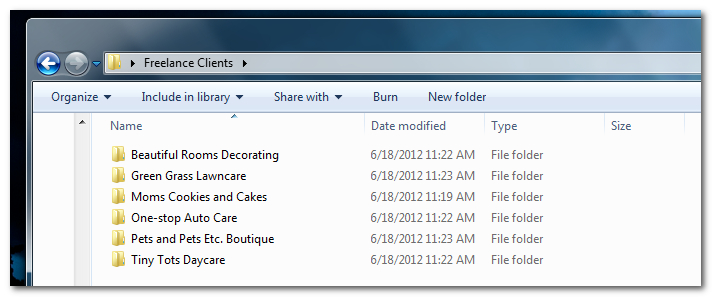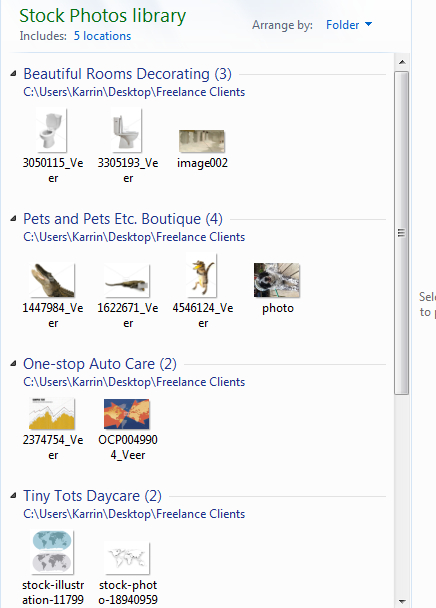Libraries were introduced with Windows 7, but we’re not sure how many people have truly discovered the benefits of using libraries to organize their documents, photos and videos.
Libraries are essentially virtual collections of folders that you have on your system. The actual folders exist where you created them, but the library is like a conveniently bunched set of shortcuts to those folders and the files within them.
How do libraries offer a unique organizational advantage? Consider this scenario:\
Mark is a free-lance designer who works with several different clients. For each client, over time, he has purchased and archived stock photos for their various projects. He stores those stock photos within the project files within each client’s folder, as you can see below:
 <\\
<\\
Mark has also created a library called “Stock Photos” and he has placed all the photos he has ever purchased for any client in that library. He didn’t have to put a COPY of the photo there, he just needed to add each one to the library. Remember, he’s adding virtual copies, saving hard disk space and time.

How does Mark’s Stock Photos library also save time?
Suppose Mark has a new project come up and he remembers he purchased the perfect stock photo a year ago for one of his other clients. He could:
a) Go combing through every separate client folder looking for that photo
b) Go to his “Stock Photos” library and take a quick sweep of the contents in one glance.
Now that we’ve demonstrated how libraries are a pretty useful feature in Windows 7, we’ll point you to a nice tutorial for creating and managing libraries of your own!





